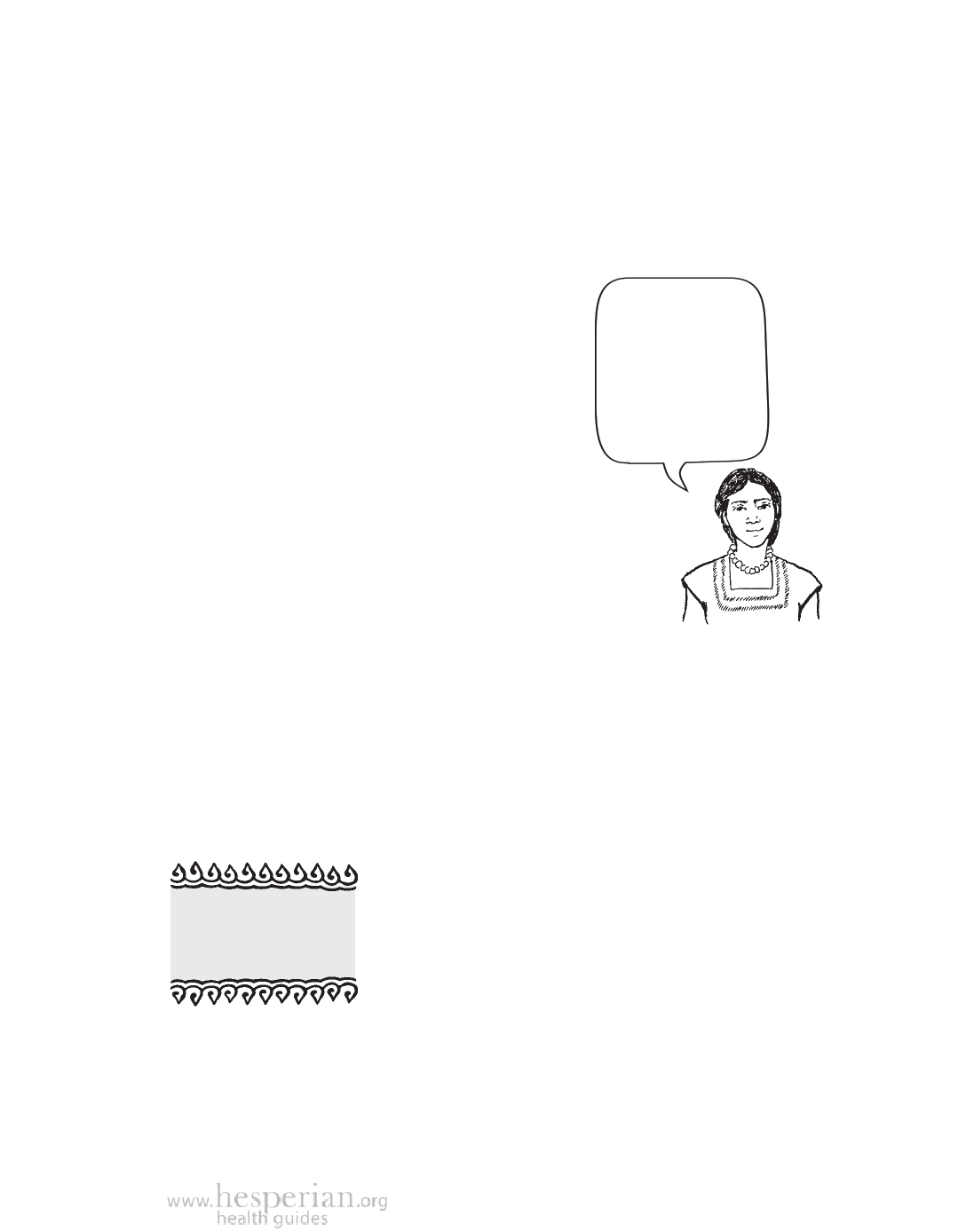
Mobilizing for Environmental Health
13
Change takes time
Improving environmental health does not happen quickly. In Manglaralto,
the health workers first treated cholera by giving rehydration drink and
also worked to prevent it by making the water clean. Then they organized
the community to build new water systems and pit toilets to prevent cholera
in the future. But it was only after the big
storm came and washed away all of these
improvements that they understood the
problems of erosion and flooding caused by
deforestation (the loss of trees). They needed
this understanding of root causes to be able
to make lasting changes.
Improvements in
environmental
health happen
step by step.
Have patience.
Sometimes change
that happens
Sometimes, we must struggle and fail
several times before we succeed. Often, it
quickly wears away
just as quickly.
is only by seeing what does not work that
we learn what does — and why. Improving
environmental health takes time because it often requires
4 different kinds of changes:
• changes to improve water systems, housing, or other
things we build for ourselves (infrastructure).
• changes in what we buy, such as refusing to buy junk
food, toxic cleaning products, or products wrapped in
plastic (consumption).
• changes in our habits, such as regular hand washing, separating trash
so more can be recycled, or growing crops in new ways (behavior).
• changes in how much power local people, corporations, central
governments, and others have in making decisions that affect the
environment (political).
All of these changes take time and affect each other.
We must be the
change we wish to
see in the world.
Work with young people
One way to make sure change lasts is to work with
young people, because they will take what they
learn into the future. Each of us, no matter what age
we are, can adopt the attitude of a young person —
to always be willing to learn and try new things.
A Community Guide to Environmental Health 2012